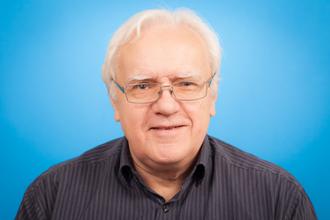Sepsis Week sheds light on a little-understood killer

By Mary Dickie

Dr. John Marshall
Sepsis is one of the most prevalent diseases in the world, and one of the most preventable. It kills between six million and nine million people across the globe each year, but it is still often misunderstood and misdiagnosed.
“It’s a big problem worldwide,” acknowledges Dr. John Marshall, a trauma surgeon at St. Michael’s and one of the main drivers of the hospital’s sepsis research and awareness programs. “In Canada, about 10 per cent of patients admitted to intensive care units have sepsis, and as many develop it while they’re in the ICU.”
Simply put, sepsis is what happens when chemicals released by the body to fight an infection end up triggering inflammatory responses, which can lead to organ failure and death. It can be caused by microorganisms like bacteria, viruses and parasites, or infections due to influenza, dengue or yellow fever. “Worldwide there are more than 30 million cases a year,” says Dr. Marshall, “and many of those are preventable through simple infection control or treatment.”
“We deal with sepsis regularly — it’s a big part of our population,” says Brigitte Delaurier, a clinical nurse specialist at St. Michael’s MSICU. “From an emergency department standpoint, it’s about identifying patients with sepsis as soon as possible and making sure you know the symptoms. And for us in the ICU, it’s not only about providing the best care for our sepsis patients, but also being aware of the long-term side effects for those patients, which can include memory loss and PTSD. It’s important that we stay up to date with the latest research and evidence-based practice.”
Dr. Marshall stresses that prevention and treatment are equally vital. “Prevention is important,” he says, “but we can’t prevent all of the events, so it’s equally important to understand how we can treat sepsis better.”
Since identifying and treating sepsis quickly are key to a patient surviving it, a number of educational programs for both the public and hospital staff have been developed. In 2012, the Global Sepsis Alliance launched World Sepsis Day, marked annually on Sept. 13, to raise awareness about sepsis. At St. Michael’s, several units participate in Sepsis Week (Sept. 10-17) with activities that highlight the warning signs of sepsis and best practice treatment options.
“Professional education is very much needed,” says Dr. Marshall, who spoke about the surgical management of sepsis at the World Sepsis Congress last week. “Sepsis is under-recognized and poorly understood, so there’s a need for it to be front and centre in the continuing medical education that we do.”
St. Michael’s emergency department was the first unit in the hospital to initiate Sepsis Week events, since joined by teams in the MSICU and General Surgery/GI/TACs/Plastics in-patient ward. This year’s activities will include a talk by a pharmacist about first-line antibiotics, as well as educational videos and posters and a “glow germ” that uses black light to reveal how well a participant has washed their hands.
Last year, the ICU team introduced a lanyard card for nurses that highlights signs of sepsis like rapid heart rate, shortness of breath and altered mental state. “We often see fevers come and go, needing antibiotics or not, so if it’s quite normal for a patient to have this fever, you might miss the other signs,” says Stephanie MacDonald, an RN in General Surgery/GI/Plastic Surgery at St. Michael’s.
Dr. Marshall says that World Sepsis Day and Sepsis Week have contributed to a much-needed increase in the public profile of sepsis. “Ten years ago, if you asked Canadians if they had heard the word sepsis, the number who said yes would be around 10 to 20 per cent. Now, it’s significantly higher. And last year the World Health Organization declared sepsis a global health priority, so it’s clear that decision makers are starting to realize that this is a problem they need to address.”
About St. Michael’s Hospital
St. Michael’s Hospital provides compassionate care to all who enter its doors. The hospital also provides outstanding medical education to future health care professionals in more than 29 academic disciplines. Critical care and trauma, heart disease, neurosurgery, diabetes, cancer care, care of the homeless and global health are among the Hospital’s recognized areas of expertise. Through the Keenan Research Centre and the Li Ka Shing International Healthcare Education Centre, which make up the Li Ka Shing Knowledge Institute, research and education at St. Michael’s Hospital are recognized and make an impact around the world. Founded in 1892, the hospital is fully affiliated with the University of Toronto.
St. Michael’s Hospital with Providence Healthcare and St. Joseph’s Health Centre now operate under one corporate entity as of August 1, 2017. United, the three organizations serve patients, residents and clients across the full spectrum of care, spanning primary care, secondary community care, tertiary and quaternary care services to post-acute through rehabilitation, palliative care and long-term care, while investing in world-class research and education.
